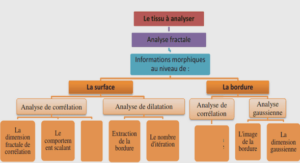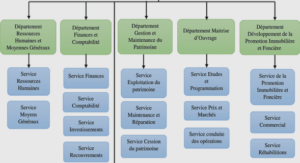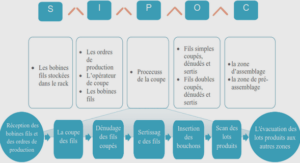Structure
Cellulose is a linear, high molecular weight polymer built up from P-D-glucose units that are linked via P(1,4) bonds and belongs to the chemical group of poly saccharides. Cellulose of natural origin is organised in strongly bound bundles of cellulose polymers. The binding among the pol ymer chains happens via hydrogen bridges and is strong because one single P-D-glucose unit contains three hydroxyl groups. The hydrogen bridges on the one hand provide the stiffness of the cellulose molecules via intramolecular interactions as weil as the strong binding to other cellulose polymers via intermolecular interactions. These bundles are called elementary fibrils, several of such elementary fibrils again bind together to form a micro fibril. The polymer chains within an elementary fibril can either be aligned (i.e. crystalline) respective to each other or randomly oriented. (i.e. amorphous) (Wagenfiihr and Scholz 2008). By the relative arrangement of the cellulose molecules in the crystal domains, cellulose can be further classified into different types. However, the topie will not be diseussed further as the mechanical processes used in this work to process native wood cellulose into MNFC products do not change the crystalline morphology of the starting produet; that is I~ for native cellulose in higher plants. It should be noted that in the following section the same terminology Types is used to describe the nano- and micro-sealed morphology, i.e. of higher hierarchical order th an the morphology of the sole crystalline domains, and not to describe the difference in the crystalline morphology. The cellulose fibrils are found in plants, providing mechanical stability as a rigid structure, together with other macromolecular compounds such as lignin, hemicellulose, and ev en proteins. Depending of the source and the diminution procedure, different types of celluloses, not to be confused with the different allomorphs of cellulose, exist. The specific properties of those different types are further described in the next paragraph.
Micro nanofibrillated cellulose (MNFC)
In literature, the terms for fibrillated cellulose types are not as weIl defined as e.g. bacterial cellulose that refers to the origin or nano crystalline cellulose that refers to the particle morphology. Especially the term micro in micro fibrillated cellulose (MFC) might be eventually misleading as these fibrils too may be in the < 1 00 nm range. It is suggested by sorne authors, for example by Moon et al. (Moon et al. 20 Il), that the differentiation characteristic between nanofibrillated cellulose (NFC) and MFC is mainly the manufacturing process. Whereas MFC is typically obtained by purely mechanically disintegrating pulp, NFC manufacturing involves a pre-treatrnent like an oxidation, a grafting or an enzymatic treatment. The pre-treatment is on one hand used to reduce the amount of energy used in the mechanical fibrillation process step, and on the other hand 1eads to a decreased fibril size compared to MFC fibrils. In contrast to the described terminology by Moon et al. (Moon et al. 20 Il), the term MNFC is used in this work to represent micro nanofibrillated cellulose, i.e. a product with a significant leve1 of microscopic fibres, including a micro fraction, which have nanofibrils formed on their surface by a high energy fibrillation process, as weIl as individualised nanofibrils. Effectively, it can be considered as a collective term for MFC and NFC materials, as most, mainly mechanically fibrillated MFCs and NFCs having both, micro- and nano-sized fibre/fibril fractions (Herrick et al. 1983; Roussière et al. 2014).
According to Moon et al. (Moon et al. 2011), an MNFC product wou1d fall under the terrn MFC. However, due to the fact that very fine fibrils in the very low mn-range are also present in such products (individua1ised and on the surface of microfibrils), the terrn might be misleading. Therefore, it is here proposed that the terrn MNFC is more appropriate for fibrillated cellulose materials that do contain micro- as weil as nano-sized features. Furtherrnore, it is suggested here to use the term NFC exclusively for products that contain fibrils solely in the low nm range, e.g. < 100 mn. This is weB in line with the proposai of Kangas et al. (Kangas et al. 2014), yet they promote to use the terrn MFC rather than MNFC for materials that contain also coarser fibrils and/or fibres. In short, MNFC is likely a more accurate term to describe a mechanically fibrillated cellulose material, because ofits naturally broad fibril width distribution ranging from the nanometre to the micrometre scale. Furtherrnore, it is also very Iikely to have nanofibrillation on micrometre sized fibrils present in addition to individualised nanometre fibrils. So, materials named MFC and NFC in the literature can very likely named MNFC as well, unless they are fractionated and/or strongly chernically modified. The next section will have a focused look on the manufacturing, the properties and potential fields of applications only for MNFC products as this work is will be limited to this type of cellulose.
MNFC suspensions
Cellulose molecules contain a large amount of hydroxyl groups which strongly interact with water molecules via the formation of hydrogen bonds. Even though sorne of the hydroxyl groups form inter-molecular hydrogen bonds with other cellulose molecules within a fibril and among other fibrils, the interaction of cellulose parts in MNFC with water remains strong. Such strong interaction is reflected in a high water retention value, whereas for highly fibrillated grades, the water retention measurement procedure needs to be modified in order to provide meaningful results (Dimic-Misic et al. 2013c). The strong interaction is also reflected in the rheological behaviour ofMNFC suspensions. Indeed, even at high dilution levels, the MNFC suspensions exhibit non-Newtonian characteristics (Iotti et al. 20 Il). As rheology is used as one of the main characterisation tool in present work, a more in-depth discussion is later provided. MNFC suspensions typically appear turbid as sorne features are still in the Ilm-range and therefore scatter light. As for other grades as NFC and NCC when such coarse Ilm-sized residues are missing and when only nm-sized features remain, the suspensions become clear, translucent. Within a fixed, pigment particle free system, the dependence of the light scattering on the cellulose feature size can be used to indirectly asses a MNFC suspensions degree of fibrillation as proposed by Chinga-Carrasco (Chinga-Carrasco 2013).
Another property that is typically measured when an MNFC suspension or MNFC material is assessed is charge, either as surface charge (Fall et al. 2011 ; Fardim et al. 2002; Liimatainen et al. 2009) or as (-potential (Dimic-Misic et al. 2014; Eronen et al. 2011 ; FaU et al. 20 Il; Liimatainen et al. 2009) which also indirectly indicates the degree of fibrillation. Yet, both methods are prone to produce misleading, ev en wrong, absolute numbers. lndeed, pulps also contain residuals like hemicellulose or lignin which most probably also contribute to the total charge that is determined, e.g. by titration methods. So, the comparison of MNFCs originating from different pulp sources remains very critical. Furthermore, the measurement of the (-potential on MNFC, or fibrous materials in general, is critical, as already indicated not only by providing different absolute values, but as they depend on the applied measurement technique (El-Gholabzouri et al. 1999). Yet, charge measurements may still be a good relative comparison parameter within a fixed recipe in order to monitor the evolution of the degree of fibrillation within a given manufacturing process; i.e. ail other parameters remaining constant. This issue is further developed in sections 2.4.2.1 and 2.4.2.2.
Dry MNFC
MNFC can be manufactured in dry form in different materials or workpieces using different techniques, probably having different properties. Here, the focus is placed on intrinsic material properties, independently of the final form or the manufacturing process. Therefore, the properties presented below were measured on MNFC films or bars, where one assumes the material exhibits the physics of continuously condensed matter. Specific application properties are presented in the respective following sections 2.2.3 .1 to 2.3. Nevertheless, a direct comparison of published values for mechanical- and other properties is difficult as the manufacturing method, and the respective parameters, to obtain a condensed MNFC material influence the fmal properties as for instance shown by Yang et al. (Yang et al. 2012). Depending on the pulp source and the degree of fibrillation, elastic moduli of MNFC in the range of 8 to Il GPa (Josset et al. 2014; Osterberg et al. 2013; Schenker and Gane 2013; Schenker et al. 2015; Spence et al. 2010) are typically reported, but values as high as 17 GPa have been found (Syverud and Stenius 2009b). Within a publication, tensi1e strength typically follows the same trend as the elastic modulus, with higher modulus materials presenting higher tensile strength (Osterberg et al. 2013).
However, the tensile strength, as also elastic modulus values, vary significantly among different publications. This indicates that the tensile strength might be more sensitive to the drying and consolidation process than the elastic modulus, or that the material is not fully conso1idated in all examples. Typical values of the tensile strength are found ranging from 60 to 250 MPa (Josset et al. 2014; Osterberg et al. 2013 ; Schenker and Gane 2013; Schenker et al. 2015; Spence et al. 2010; Syverud and Stenius 2009b; Yang et al. 2012). As a comparison, values for crystalline cellulose can be as high as 138 GPa (Nishino et al. 1995) but one can surmise that with better consolidation MNFC-based materials would increase beyond 17 GPa while still remaining below the maximum for crystalline cellulose (N ishino et al. 1995). For certain applications, another very interesting property is the low coefficient of thermal expansion (CTE) of cellulose that is reported to be as low as 10-7 KI (Nishino et al. 2004).
Depending on the used MNFC base-material, the MNFC-film manufacturing method and the used characterisation method for barrier, e.g. air, oxygen and oil, properties, the absolute values may differ (Aulin et al. 2010; Lavoine et al. 2012; Osterberg et al. 2013; Syverud and Stenius 2009b; Yang et al. 2012). However, the common findings are that MNFC films, or MNFC layers (see chapter 2.2 .3.3), have a very good oxygen barrier property, i.e. low oxygen transmission rate, and therefore a good air barrier, i.e. low air permeability, at low relative humidity values. ln fact, the oxygen permeability of MNFC films at low moi sture contents is as low or even lower than technical polymers that are currently in use as oxygen barrier layers (Lavoine et al. 2012). Unfortunately, the MNFC films have a relatively high water vapour permeability (Lavoine et al. 2012) inducing a significantly increased oxygen permeability at increased relative humidity conditions (Au lin et al. 2010), as explained by the uptake ofwater vapour into the MNFC material. The intrinsic oil/grease barrier properties ofMNFC is not described in literature. Only few publications exist where the property was measured on MNFC coated substrates (see chapter 2.2.3.3).
Foreword |






